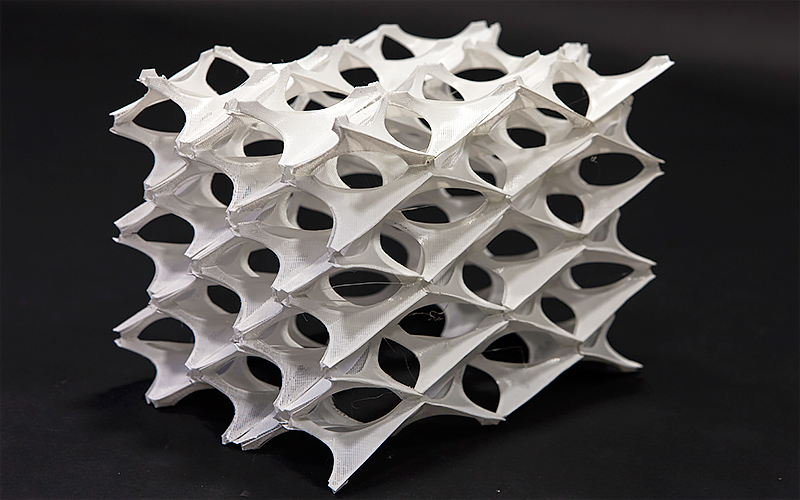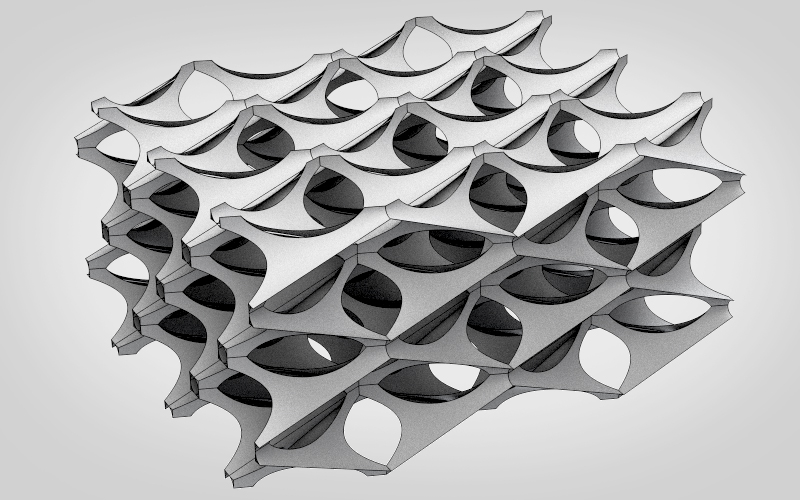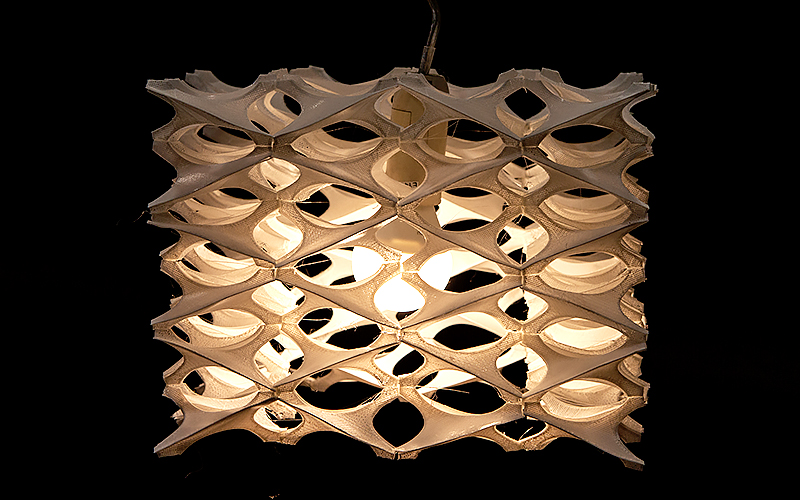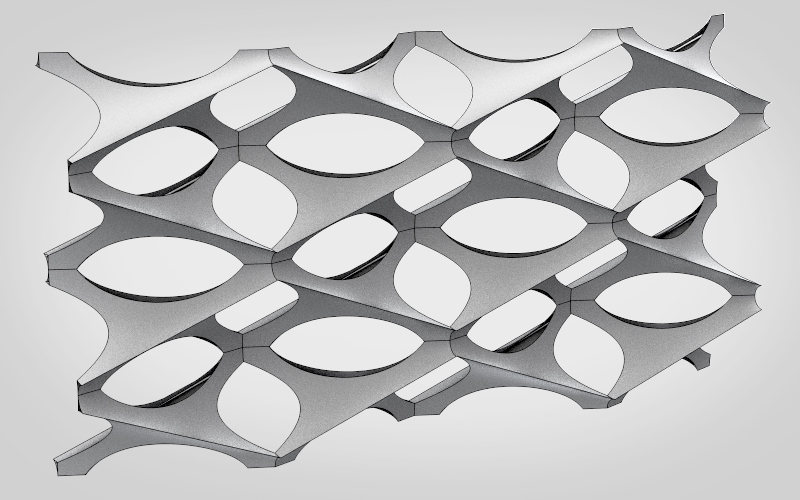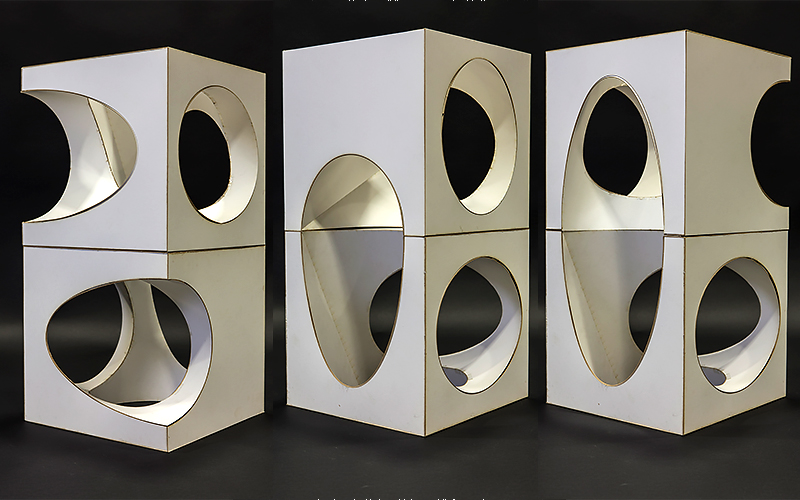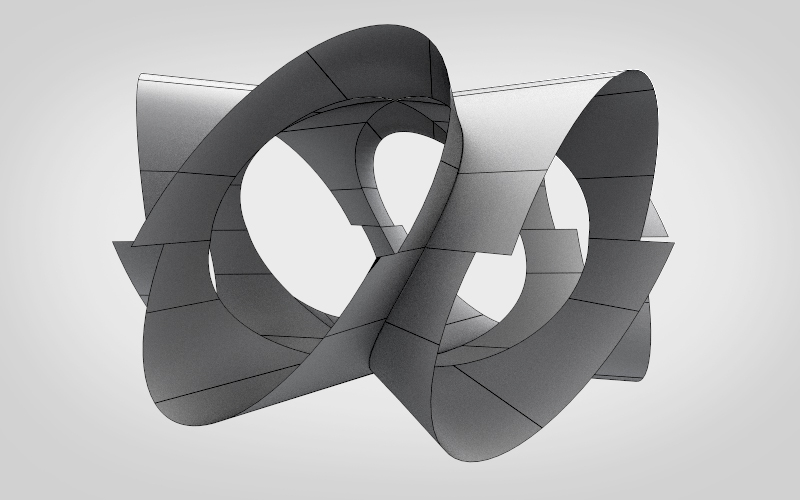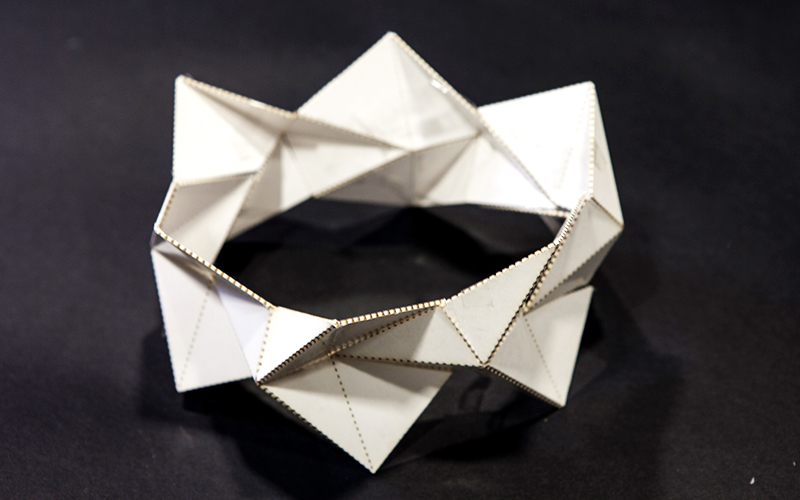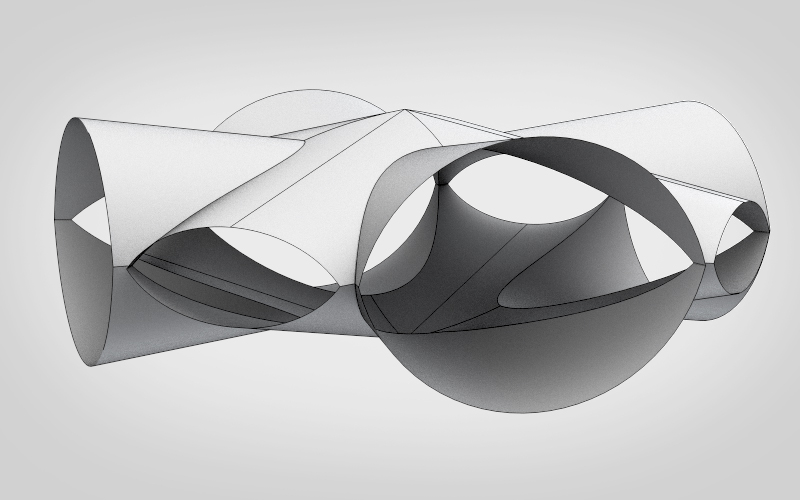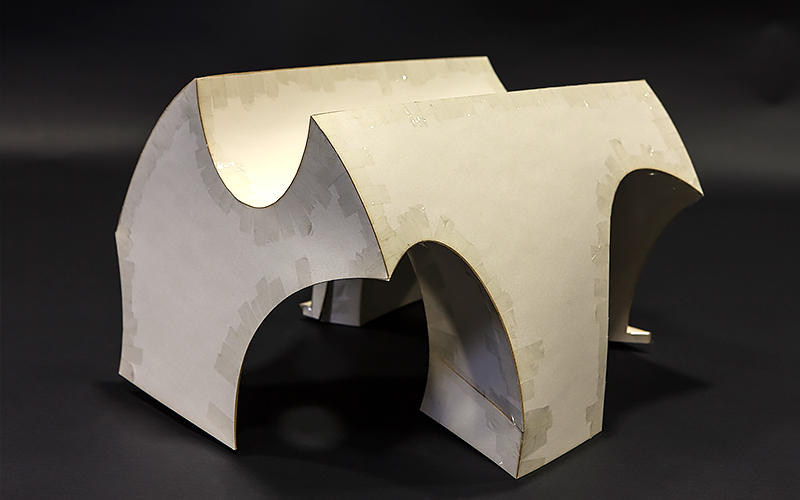- 3D-Modeling
- Cologne
- Developable Surface
- Laser Cutter
- Master
- Shell Structure
Today, digital tools seem to make it easy to design and implement complex architectural projects. Many of these projects were, however, subjected to a very elaborate, so-called post-rationalisation process – i.e. a method of geometric simplification. Results of these optimisation processes are, for example, the triangulation of doubly curved surfaces or the approach to the target shape by means of simply curved geometries. As a rule, these processes lead to a compromise solution that often foils the actual design idea as a result. From today’s perspective, such processes seemed almost anachronistic. The first step towards a consistent architecture that is structurally interesting as well as systematically coherent should therefore already integrate the geometric framework conditions as well as the design possibilities.
In light of this, the design task consisted in a research-oriented approach to finding an independent architecture that creates spatial, complex structures by simple means. By combining, adding and subtracting Euclidean geometries, different versions of a design idea were examined in the process and evaluated with respect to their aesthetic, structural and functional quality. One focus was on the simple buildability of the models. Given this, geometries with developable surfaces were used as the starting point for the spatial composition to guarantee the easy transfer of the digital model to a physical scale model.
CREDITS
Joséphine Apaix, Mojdeh Barkhordar Kashani, Yves Christian Dowling, Lucas David Dyrda, Lina Geitner, Jovana Jovicic, Julian Lanser, Matthias Monka, Kathrin Roth, Johanna Katharina Witzel, Nils Michaelis
Marco Hemmerling, Philipp Meise
Faculty of Architecture, Cologne University of Applied Sciences
